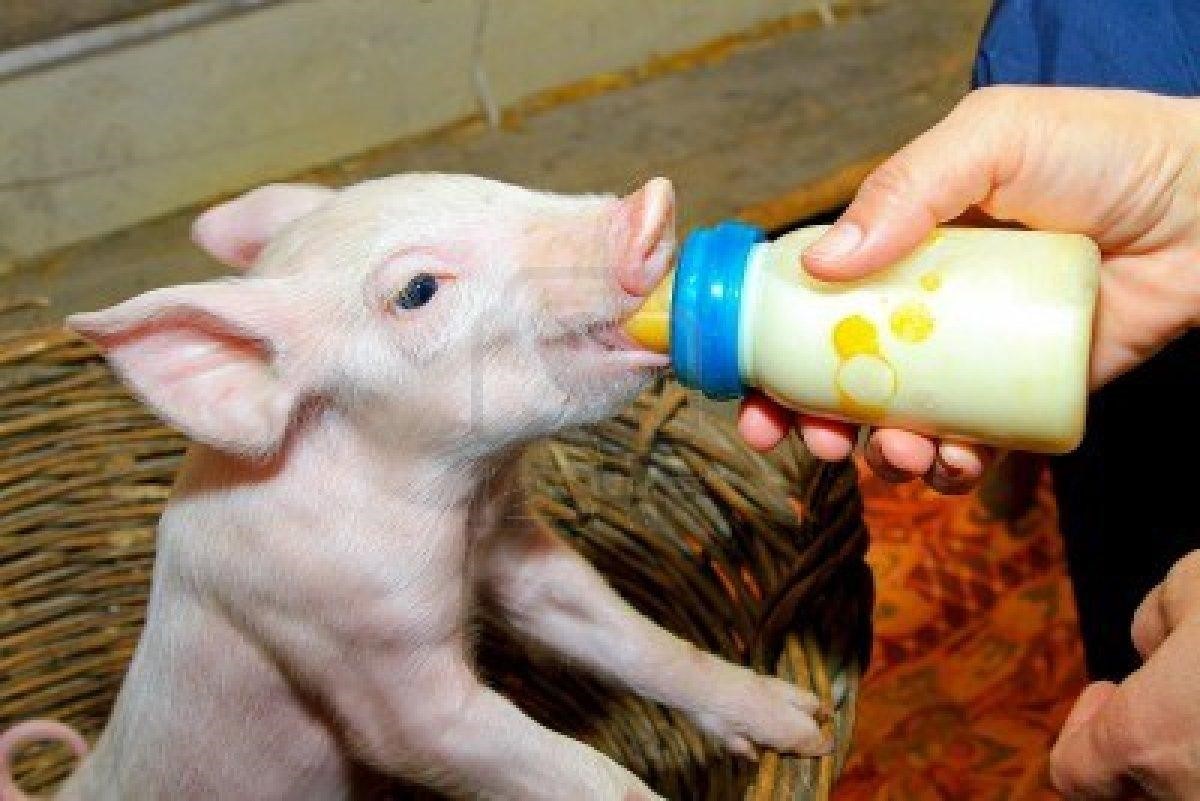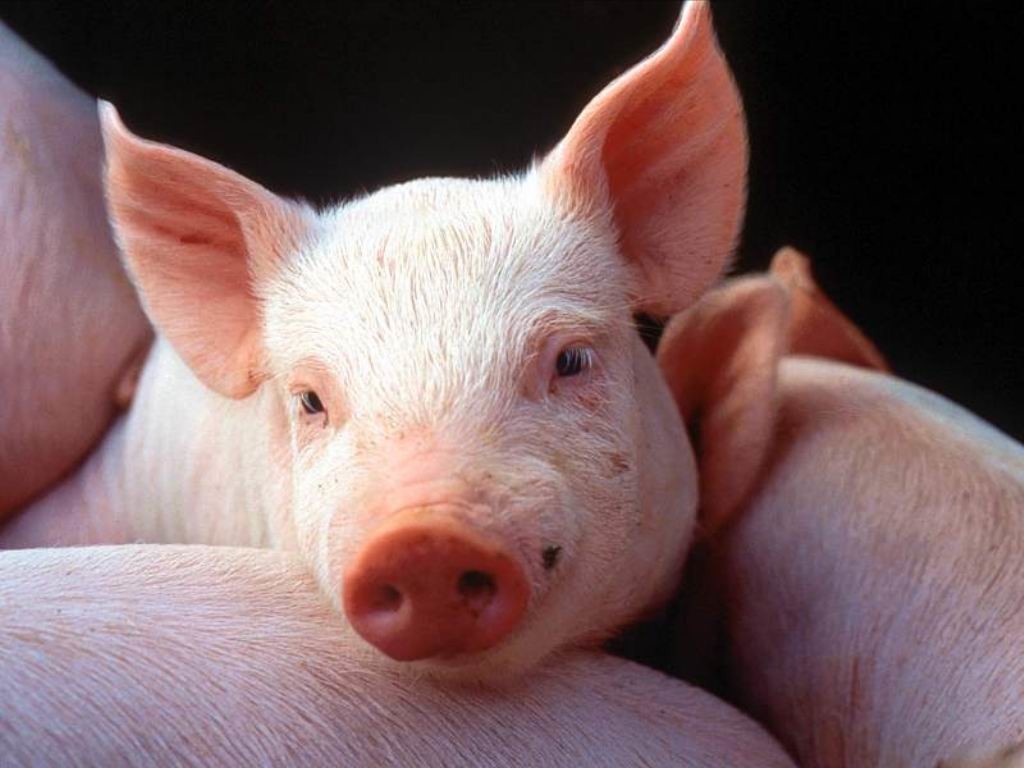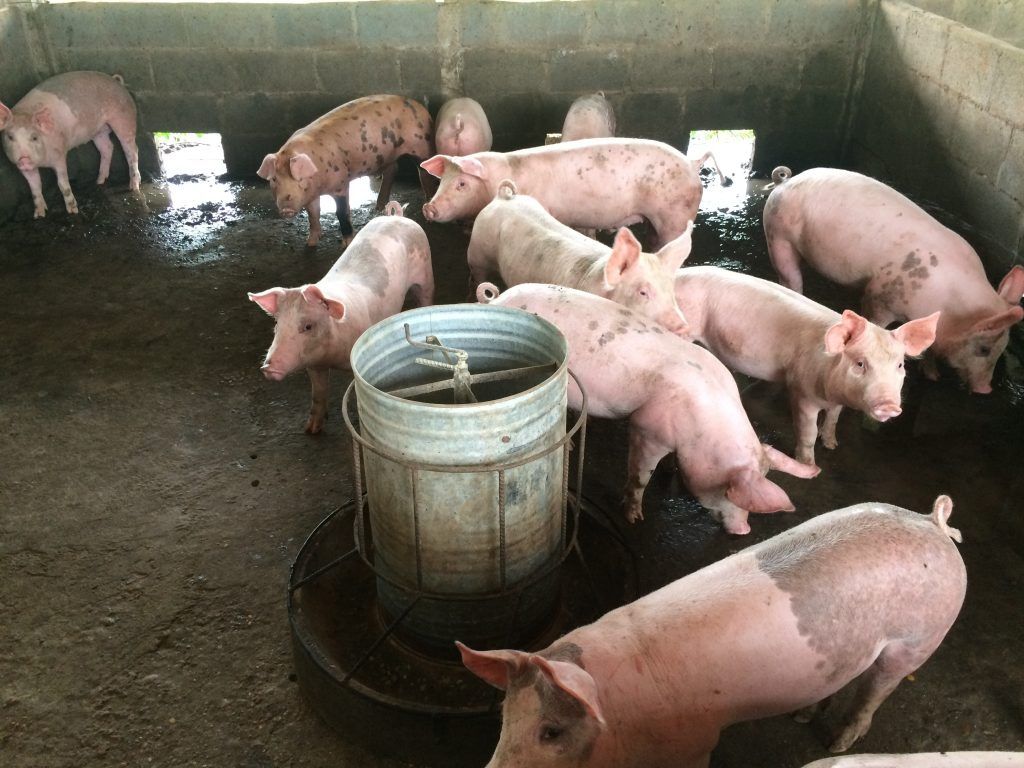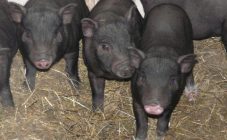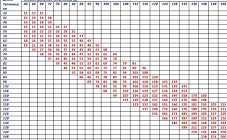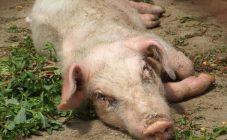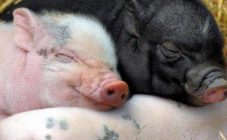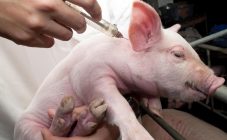Content:
This disease is very dangerous. Alimentary anemia of piglets, if not properly treated, can be fatal. The article tells about what this disease is, how to cure it, and what preventive measures against anemia are used.
Disease information
With this disease, the content of red blood cells in the blood of piglets is reduced. At the same time, there is a lack of hemoglobin. Anemia leads to a change in the properties of blood in such a way that animals lag behind in their growth and lose resistance to dangerous diseases, they often cannot stand up and remain sitting or lying.
If the piglet has failed hind legs, the cause may be this disease.
It is common in almost all climatic zones. According to veterinary medicine, it most often occurs in the industrial rearing of piglets.
Piglets that are not older than three weeks of age are susceptible to anemia; they move like jerky.
History says that this disease was first described by the German physician W. Brasch in 1890. The disease was common in Spain.
The cause of the disease is that iron deficiency is found in the piglet's body. He, in comparison with other types of livestock, has a higher need for the absorption of iron at a young age. Before he is one month old, the daily requirement is 8 to 10 mg. One of the main reasons for this is that piglets gain weight relatively quickly during this time. At the same time, on the sixth or seventh day, the weight usually doubles.
Piglets can get the required amount of iron from the following sources:
- With the help of milk from the sow.
- Internally, when iron is obtained on the basis of the activity of red blood cells.
In this case, the first method gives from 1 to 1.5 mg per day, the second - 1 mg during this time.
Additional causes of occurrence are:
- Lack of sufficient protein in the body of the piglet and the sow.
- The deficiency of nutrients negatively affects health: zinc, cobalt and manganese.
- Lack of essential vitamins, especially A, B12, E.
- Weak hemoglobin level in the sow's body.
- If poor quality or toxic feed is used in the piglets' diet.
- Violation of the rules for keeping animals can also contribute to the development of anemia. An example is high air humidity, poor air exchange, crowded content, microbial contamination.
The pathogenesis is as follows. Signs of the disease become clearly visible 7-10 days after birth:
- At the same time, the piglets become weak and lethargic, do not hold on to their feet, they can hardly cross obstacles, move little, and refuse to eat.
- They have decreased sucking ability, which plays an important role at this age.
- Breathing and pulse become more frequent, legs give way from weakness, pigs can easily fall off.
- There is pallor of skin and ears. The symptom of "white ears" is one of the characteristic signs of the disease. The skin on the legs is affected.
- There is pronounced swelling on the mucous membranes.
- Sick pigs lag behind in their growth from normal animals.
Then the symptoms worsen:
- The bristles appear rough and break easily.
- The skin becomes dry and wrinkled.
- They continue to deny themselves food.
- For this stage of the disease, disorders of the gastrointestinal tract are characteristic.
- The mucous membranes become cyanotic.
- The tips of the ears and tail also look like this.
Further, the disease leads to the fact that the piglets become wrinkled, are hardly able to rise, on the neck and in the shoulder-shoulder joints, the skin becomes wrinkled, paws are visible on it.
In case of anemia, in the absence of treatment, death occurs within 14 days from the moment when the piglets became ill. Their meat is not even suitable for cooking in the oven.
Methods of treatment, prevention
To choose an effective treatment method, a diagnosis must be made. When it is developed, the food ration of the piglet and its mother is taken into account, the presence of clinical symptoms of the disease is analyzed. At the same time, the pig's blood is analyzed for the content of iron and hemoglobin in the blood of the animal - from which it can become numb.
If the pig does not stand on its hind legs, what to do? Check him for nutritional anemia. With the right treatment, it will be able to rise in a few weeks.
Why do piglets fall to their feet and how to treat?
For this, the following measures are usually taken:
- Pay attention to the diet of not only piglets, but also sows. At the same time, they seek to increase the iron content in it. The pig's leg should have smooth skin and no white spots.
- To increase the iron content in the pig's body, it is important to give him in the diet not only iron, but also various preparations from the liver, based on manganese, cobalt, vitamins belonging to group B, and others.
- Various types of group treatment for piglets are used. For this purpose, iron glycerophosphate is added to their feed in powder form or in the form of a paste at the rate of 1.5 g for each piglet. The course duration is 6-10 days.
In order to carry out the prevention of nutritional anemia, it is required to deal with the causes that lead to it. They are described in detail in the relevant abstracts on this topic.
An important measure of this kind is the provision of special food for the sows during the second half of gestation, as well as while they are feeding the piglets. At this time, one cannot refuse to provide them with a full-fledged diet, taking into account the content of cobalt, iron, zinc, vitamins A, B and E.
In large-scale pig farms, careful attention must be paid to iron and vitamin B12 in the diet of sows to combat anemicity.
Anemic pigs, starting from the second day, need to be given a special feeding in the form of iron glycerophosphate. In this case, the norm per piglet should be from 0.2 to 0.3 g. The course of admission can last from ten to fifteen days. If you refuse it, there will be a deficiency of iron in the body.
The drug containing ferrodextrin should be administered in a volume of up to 2 ml per pig in the first days after birth. At the same time, the iron reserve is replenished in the amount of 150 to 200 mg. This drug is administered in the form of injections intramuscularly. To introduce iron to piglets, the instructions for use establish rules for this.
Advantages and Disadvantages of Treatment Methods
One of the most effective remedies in pig breeding is Suiferrovit. With its help it is possible to combat alimentary anemia in piglets:
- Replenishes their existing iron deficiency.
- Strengthens the immune system, which is significantly weakened due to the manifestations of this disease.
Suiferrovit and instructions for use for piglets says that it is injected into the body. Moreover, this is allowed to be done intramuscularly or injected under the skin.
The presentation of the action of this medicine clarified the procedure for its use. Suiferrovit and how many ml for newborn piglets - the first dose for a three-day-old piglet should be 5 g.
The second should not be injected immediately, but one or one and a half weeks after the first time. In this case, the dose of the drug should be twice the 10 ml.
The third injection occurs before weaning the piglet from the sow. Usually this time comes two months after birth. At this time, the dose should be between 10 and 20 ml.
Ferranimal-75 is injected into the piglets' neck or thigh. In the first days of a piglet's life in the village, the dose is 2-4 ml. If necessary, the injection is given again after two weeks. Ferranimal 75 for piglets is also one of the most effective remedies for anemia.
